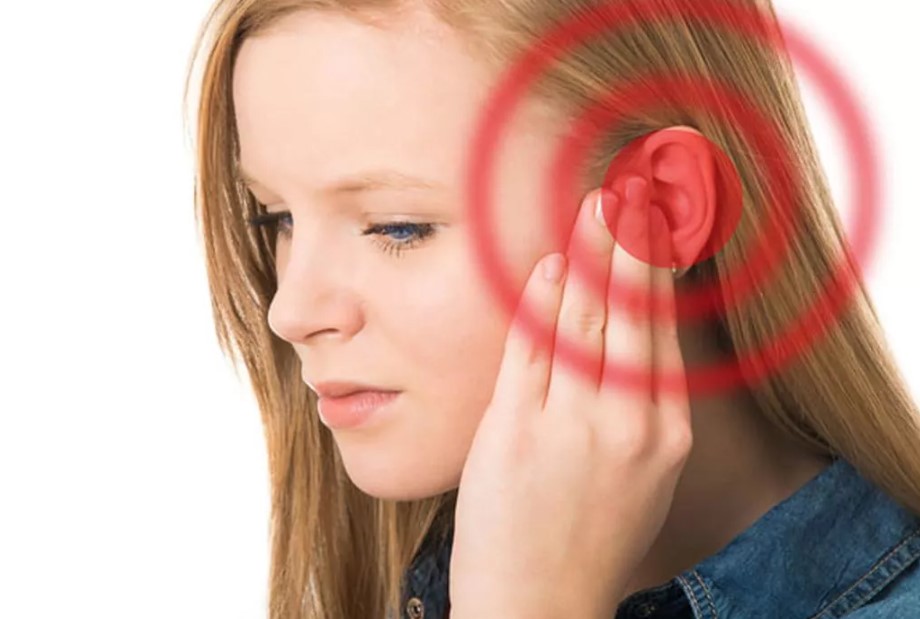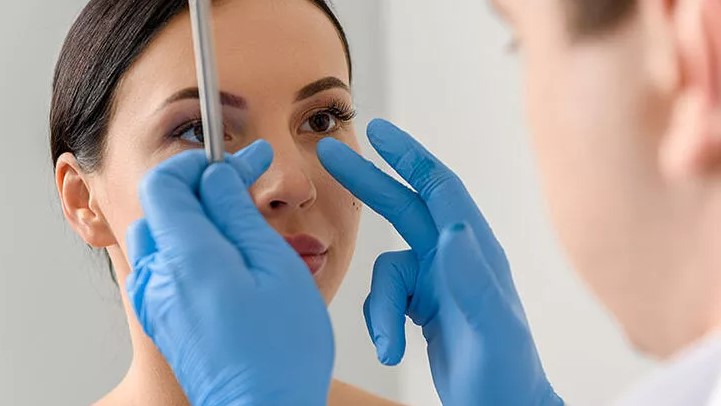ENT (Ear, Nose, Throat)
Otolaryngology is a branch of medicine that examines diseases in the area of the ear, nose, and throat.
Ear diseases are primarily divided into the following categories:

✔ Hearing loss
✔ Ear infections
✔ Dizziness
✔ Tinnitus (ringing in the ears)
✔ Facial paralysis
✔ Neuralgia (nerve pain)
✔ Ear tumors
✔ Ear deformities
Nose diseases are classified as follows.

✔ Allergic catarrh
✔Sinusitis
✔Septum Deviation
✔Concha enlargement
✔All kinds of benign and malignant tumors in the nose and sinus area
Throat diseases are examined under the following headings.
✔All kinds of inflammatory diseases and benign and malignant tumors in the lips, oral cavity, and throat
✔Treatment of snoring and obstructive sleep apnea
✔ Treatment of tonsil and adenoid diseases
✔All kinds of inflammatory diseases and benign and malignant tumors in the vocal cords (larynx) and pharynx
✔Voice and speech disorders
✔Esophageal diseases and deglutition disorders
✔All kinds of inflammatory diseases and benign or malignant tumors of the salivary glands. Diseases of the head and neck regions
✔ All kinds of inflammatory diseases and benign and malignant tumors in the neck
✔Diseases of sight, smell, hearing, balance, facial nerve, and other major nerve and vascular structures in this region
✔Facial trauma and fractures
✔Deformities in the face area
✔Interventions to repair aesthetic and tissue losses (reconstructive)
Ear Diseases
Hearing Losses
Hearing loss cases are divided into three groups:
✔ Conductive Hearing Loss: There is a decrease in hearing due to problems in the external ear or middle ear.
✔ Sensorineural Hearing Loss: Hearing loss occurs due to problems in the inner ear, the auditory nerve, or the brain.
✔ Mixed Hearing Loss: If there is a problem in more than one part of the auditory pathway, hearing loss occurs.
Reasons for Hearing Loss

Causes related to the inner ear or auditory nerve:
✔ Inner ear inflammation
✔ Damage to the hair cells in the inner ear
✔ Sudden hearing loss
✔ Noise-induced hearing loss
✔ Age-related hearing loss
✔ Meniere’s disease (increased fluid pressure in the inner ear)
✔ Tumors affecting the auditory nerve
Causes related to the middle ear:
✔ Torn eardrum
✔ Middle ear infection
✔ Decreased pressure in the middle ear
✔ Ossification of middle ear bones
✔ Tumors in the middle ear
Causes related to the outer ear:
✔ Earwax buildup
✔ Presence of a foreign object in the external ear canal
✔ Congenital closure of the external ear canal
✔ Outer ear infections
✔ Tumors in the external ear
The treatment of hearing loss varies depending on the cause of the problem. In some cases, the following treatments can be applied:
Treatment of Hearing Loss
✔ Hearing aids for hearing loss
✔ Cleaning of earwax or foreign substances in the external auditory canal
✔ Treatment of middle ear infections with antibiotics or other medications
✔ Surgical treatment for chronic middle ear infections
✔ In cases of otosclerosis, which occurs due to ossification of the stapes bone in the middle ear, the stapes bone is removed and replaced with a prosthetic stapes.
✔ In cases of hearing loss related to the inner ear, hearing loss is often irreversible. However, in cases of hearing loss due to tumors, hearing may need to be sacrificed for tumor removal.
Dizziness (Vertigo)
Vertigoes can be related to many organs. Disorders that can cause vertigoes include the brain, spinal cord, inner ear, eyes, joints, and muscles.
Dizziness can be associated with various organs. The brain, spinal cord, inner ear, eyes, joints, and muscles can all cause dizziness.
Causes of dizziness related to the nose and throat include:
✔ Upper respiratory tract infections
✔ Dizziness due to head position
✔ Inflammation of the nerve that transmits balance signals to the brain (vestibular neuritis)
✔ Persistent middle ear infections
✔ Conditions resembling tumors in the inner ear
✔ Changes in the amount of fluid in the inner ear (Meniere’s disease)
✔ Inflammatory diseases affecting the inner ear (such as labyrinthitis)
Since dizziness is a symptom of another underlying condition, it is important to treat the underlying cause first. If the dizziness is localized, it can be treated with procedures performed by a physician. Other causes may require medication.

Tinnitus
Tinnitus is the perception of abnormal sounds despite the absence of an external source of sound. There are several causes of tinnitus.
The most common causes include:
✔ Earwax buildup
✔ Fluid buildup in the middle ear
✔ Torn eardrum
✔ Ear drum inflammation
✔ Stiffening of the ear’s bone joints in the middle ear
✔ Enlargement of veins in the head and neck area
✔ Formation of a tumor on the nerve responsible for hearing and balance
✔ High or low blood pressure
✔ Diabetes
✔ Thyroid gland problems
✔ Head or neck injury
✔ Use of certain medications
✔ Changes in nerve function with aging.

If the cause of tinnitus is found, treatment can be applied for that cause. When the cause is not clear, treatment is applied to reduce symptoms.
Middle Ear Infections
✔ Middle ear infections are inflammations that occur in the space behind the eardrum.
✔ They are usually caused by viruses or bacteria.
✔ They typically develop after a dysfunction in the Eustachian tube, which provides ventilation to the middle ear, often due to a cold or recent allergy.
✔ Treating middle ear infections is crucial. In chronic cases, serious problems like hearing loss, middle ear bone fragility, and meningitis can occur.
✔ Initially, treatment involves antibiotics. Additionally, medications that reduce mucous swelling and increase its fluidity may be given. Allergy treatment may also be added for patients with allergies.
✔ If medical treatment is insufficient, surgery may be necessary.
✔ During surgery, a small incision is made in the eardrum, or a tube is placed. This allows the fluid inside to drain and ventilate the middle ear.
Cholesteatoma
✔ Cholesteatoma is the growth of the skin layer in the ear towards the middle ear due to recurrent infections.
✔ Cholesteatomas usually take the form of cysts or sacs, growing inside the ear and spreading dead skin cells to the surrounding area.
✔ As cholesteatoma grows over time, it can lead to the destruction of the bones around the middle ear. If it continues to grow, complications like hearing loss, dizziness, and facial paralysis may occur.
✔ Initial treatment involves ear cleaning, antibiotics, and ear drops.
✔ Cholesteatomas are conditions that require surgical removal.
Nose Diseases
Nasal diseases are mainly classified as follows:
✔Allergic rhinitis (influenza)
✔Sinusitis
✔Curvature of the nasal septum
✔Turbinate enlargement
✔Tumors of the nose and sinuses.
Allergic rhinitis (influenza)

The inflammation of the nasal mucous membrane due to allergies is called allergic rhinitis. It is a common condition.
There are various factors that can cause allergies, with the most common being dust, pollen, mold, certain foods (such as milk, eggs, strawberries, and others), chemicals, and pets.
Allergic rhinitis symptoms include a runny nose, sneezing, nasal congestion, itching, postnasal drip, throat irritation, chronic cough, and ear pressure problems. One of the treatment methods is avoiding allergens. Additionally, medication and vaccines can also be applied.
Turbine Expansion:

The turbinates are structures composed of bones and soft tissues, located on the wall between the nose and the nasal cavities, three on each side.
The most common and usually the only symptom of enlarged turbinates is nasal congestion. Turbinates typically grow and shrink at times depending on the function of the nose.
However, when they grow large enough to cause nasal congestion, it is usually due to allergic or inflammatory causes.
For turbinates, drug therapy is usually tried first. However, in most cases, drug therapy is not sufficient, and there may be a need for surgery.
Septum Deviation

It is a structure called the nasal septum, consisting of cartilage and bone, dividing the inner part of the nose into two sections.
This septum can be highly curved in some individuals or may exhibit curvature in narrow areas inside the nose. In such cases, it can cause nasal congestion.
A deviated septum may lead to difficulty in breathing, pressure, and pain in the face, nasal discharge, and sinusitis.
A procedure called septoplasty is performed to correct a deviated nasal septum. This procedure is done inside the nose without cutting the skin. The purpose of the procedure is to straighten the curved sections.
Sinusitis

Inflammation of the spaces in the bone structures around the nose is called sinusitis.
The nose and sinuses are areas where bacteria and viruses frequently settle and become inflamed. In these areas, there are always bacteria and viruses that will cause inflammation, and if there is a situation that may disrupt the ventilation of the sinus, sinus inflammation develops.
Sinusitis treatment aims to destroy the bacteria and to open the nostril of the sinuses. Bacteria are destroyed by antibiotics. Surgery may be required in cases that do not respond to medications. Surgery may be required if there is no response to medications.
Throat Diseases
Throat diseases are examined under the following headings:
✔ Infections and tumors of the lips, mouth, and throat
✔ Snoring and sleep apnea
✔ Tonsils and adenoids
✔ Hoarseness and swallowing disorders
✔ Voice and speech disorders
✔ Esophageal diseases and swallowing disorders
✔ All types of salivary gland infections and benign or malignant tumors, head and neck diseases
✔ Neck infections and tumors
✔ Eye, smell, hearing, balance, facial nerve, and other neurological and vascular diseases
✔ Facial injuries and fractures
✔ Facial deformities
✔ Facial deformities and cosmetic procedures
Tonsillitis
Tonsils are lymphoid nodules located at the back of your mouth, one on each side. Their function includes filtering harmful microbes that enter the mouth. However, when they encounter too many bacteria, they become inflamed and swollen. This condition is called tonsillitis.
The most common symptoms are sore throat, headache, fever, chills, and swelling of the glands in the throat and jaw.
Adenoid
Adenoids are another tonsil located in the space behind the nose. These small tonsils are not visible during an examination. Their duty also includes protecting the respiratory system from viruses and germs coming from the outside.
If adenoid inflammation occurs frequently, it grows and becomes a source of bacteria, causing continuous throat, ear, and nose diseases.
Pharyngitis
Inflammation that occurs in the tissues that cover the back wall of the pharynx is called pharyngitis. This inflammation can result from irritation or bacterial infection. Symptoms of pharyngitis include pain behind the pharynx, difficulty swallowing, fever, and fatigue, and there may also be fatigue.
Head and Neck Cancers
Smoking and alcohol use in the head and neck region are the main causes of cancer. Different symptoms may occur depending on the location of the cancerous tissues. These include neck lumps, hoarseness, lip thickening, bleeding from the mouth/nose/throat, changes in skin color, difficulty swallowing, and continuous ear pain.
The most common types of head and neck cancers are throat cancer, nasal pharyngeal cancer, vocal cord cancer, tonsil cancer, and upper esophageal cancer. Treatment options vary depending on the location, type, and stage of the disease. Treatment methods such as surgery, chemotherapy, and radiation therapy can be applied alone or in combination.
Dysphagia
Difficulty swallowing is a common problem that can be observed in all age groups, especially in the elderly. Difficulty swallowing means having trouble swallowing food and drinks that pass from the mouth to the stomach.
The cause of difficulty swallowing can be numerous factors, which are usually harmless and temporary. However, difficulty swallowing can sometimes be a symptom of a more serious condition, such as a tumor or progressive neurological disorder. If difficulty swallowing does not improve within a short period, it is necessary to consult an ear, nose, and throat specialist.
Snoring
Snoring is a disturbing sound that occurs as a result of the relaxation and vibration of structures that make up the upper respiratory system, such as the nose, palate, and uvula, during sleep.
Causes of snoring include the following:
✔ Large nasal turbinate
✔ Palate structure disorder
✔ Constriction, swelling, or secretion of the walls of the throat
✔ Disorder in the structure of the tongue
✔ Narrow and short jaw
✔ Dysfunction of the nervous system that controls the respiratory system
Mild snoring can be treated without surgery by taking simple precautions. These measures include weight loss and having dinner early.
Sleep Apnea
Sleep apnea is an important condition characterized by pauses in breathing during sleep. Sleep apnea may occur occasionally with snoring. In this case, the airway is completely closed, and breathing stops. In the case of sleep apnea, the cessation of breathing is followed by silence that lasts for 10 seconds or more.
The oxygen level in the blood decreases, and carbon dioxide increases. This leads to the body waking up, hearing heavy breathing and loud snoring.
If sleep apnea is left untreated, it can lead to problems such as high blood pressure, loud snoring, fatigue, irritability, depression, forgetfulness, distraction, morning headaches, difficulty controlling weight, sweating, frequent urination, and heartburn.
Sleep apnea can be diagnosed by measuring a person’s sleep quality in sleep laboratories.
The most common surgery performed to treat sleep apnea is called “UPPP.” In this surgery, the tonsils are removed, and the size of the “uvula” behind the hard palate is reduced, preventing the tissues from relaxing.
Diagnostic Methods Used in the Field of Ear, Nose, and Throat
The primary diagnostic methods used in diagnosing ear, nose, and throat diseases are as follows:
✔ Hearing Tests
✔ X-rays
✔ Computed Tomography (CT) Scans
✔ Magnetic Resonance Imaging (MRI)
✔ Barium Swallow (Fluoroscopy)
✔ Ultrasonography
✔ Throat Culture or Strep test

Hearing Tests (Audiometric Tests)
Hearing tests are considered important methods used in diagnosing ear diseases. There are different types of hearing tests, each providing different information:
✔ Pure-tone Audiometry:
This test is the most common for the ears. It measures the ability of the ears to hear sounds of different frequencies. In this test, hearing levels in the ears are determined through both air and bone conduction. By examining these levels, it is possible to understand which part of the ear is experiencing hearing loss.
✔ Tympanometry:
This test measures the pressure in the middle ear. It is easily performed by placing a probe into the external ear canal to measure the pressure in the middle ear.
✔ Acoustic Reflex:
The acoustic reflex is the movement of the middle ear ossicles when a sound stimulus is presented. This reflex is controlled by the auditory nerve and the facial nerve. If sound is applied to one ear, the ossicles in the other ear also move. Acoustic reflex measurements are made using a tympanometry device. A probe is inserted into the patient’s ear, and the sound is heard. The movement of the ossicles is measured by changes in middle ear pressure.
✔Speech Discrimination Test:
This test measures the patient’s ability to understand spoken words. After determining the hearing threshold, some words are spoken at a loud enough volume for the patient to hear. The accuracy of the patient in repeating these words is measured.
✔ SISI (Short Increment Sensitivity Index):
This test is used in inner ear diseases. Normal ears do not detect very small changes in sound intensity, but these changes are detected in inner ear diseases. In other words, when the patient hears these changes with the SISI test, it indicates the presence of a disease in the inner ear.
✔ Decay Test:
This test is based on the adaptation of the ear to a specific sound. A sound is given to the patient, and after a period, they cannot hear this sound anymore. Hearing is ensured until the sound intensity is significantly increased.
X-Ray
X-rays are a fast and painless method used to visualize body structures, especially bones. X-rays pass through the body, but they are absorbed depending on the density of the material they pass through.
Bones and metals, being dense materials, appear white on X-rays. Air in the lungs appears black. Fats and muscles appear as shades of gray.
Please note that X-rays are used more commonly for conditions related to the bones and may not be the primary diagnostic tool for ear, nose, and throat conditions.

CT (Computed Tomography)
Computed Tomography (CT) imaging is a special method that allows for cross-sectional imaging of tissues and organs in the body using X-rays. Compared to regular X-rays, CT imaging provides more detailed information about brain tumors, head injuries, and other brain diseases. It can also image bones, soft tissues, and blood vessels using computed tomography.
MR Imaging
Magnetic Resonance Imaging (MRI) is a non-invasive technique that provides extremely detailed and clear images of internal organs and tissues. MRI uses radio waves and a strong magnetic field instead of X-rays. MRI is the most sensitive technique for detecting brain tumors, strokes, and some chronic nervous system diseases (such as multiple sclerosis). It can also examine small structures like the eye or inner ear using magnetic resonance imaging.
Sinus Film (Waters Graph)
A Water’s view is an X-ray film captured with regular X-ray devices and provides results quickly. A CT scan is required to confirm the diagnosis.
Ultrasonography
Ultrasound imaging is a method used to visualize organs and tissues inside the body using ultrasound waves. Ultrasound waves have a very high frequency that is not audible to the human ear. When ultrasound waves are sent into the body, each tissue reflects them at a different rate, resulting in different images of the tissues. Thanks to ultrasound imaging, abnormal tissues in the body such as cysts and tumors can be detected. Doppler ultrasound is used to diagnose blood flow in blood vessels and diseases that affect blood flow. This method also relies on ultrasound waves, but the movement of blood changes the sound frequency, allowing for the measurement of blood flow.
Throat Culture
A throat culture is a test used to detect bacteria in the throat and tonsils. The most common purpose of throat culture is to find bacteria from the “Group A beta-hemolytic streptococcus,” also known as “Group A strep.” These bacteria can cause diseases in organs such as the heart, joints, and kidneys. Sometimes, viruses can be the cause of throat and tonsil infections, but viruses do not appear in throat cultures. A sterile cotton-tipped swab is used for throat culture. With this swab, samples are taken from the throat and tonsils. The sample is examined in the laboratory, and the growing bacteria are identified. Additionally, a test called “antibiotic susceptibility testing” is usually performed in this test to determine which antibiotic the bacteria are sensitive to.
